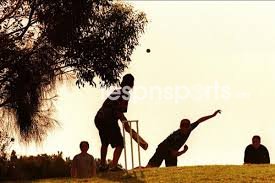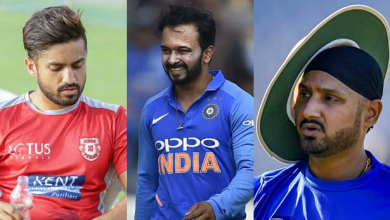CRICKETENGLISHLATEST UPDATESNEWS
Not Just IPL, Coronavirus has Adverse Implications on Grassroots and Informal Sectors of Cricket too

The Indian Premier League has been suspended. The T20 World Cup to be held in Australia later this year is in doubt. Plenty of domestic, bilateral and T20 league cricket around the world have been affected by the coronavirus.
While the focus and headlines surround all these big tournaments, the impact of COVID-19 on the cricket ecosystem – structured and unstructured – at the grassroots has slipped under the radar. They include academies, school and university cricket and a whole ecosystem of informal cricket that includes club and corporate cricket.
How will school and academy cricket be affected?
In the pre-IPL days, summer once used to be off-season for professional cricketers in India. That changed since 2008, making the two months – April and May – the most important part of the Indian cricket calendar.
It’s also the season where budding cricketers go to academies to finetune their skills, or get introduced to the sport. With April nearly gone and sport very unlikely in May, academies around India have lost out on the summer camps this year. It’s not just a monetary blow, but also a lost opportunity for plenty of young cricketers.
More importantly, even if the situation improves, the fear of the virus might not vanish in the foreseeable future, which could discourage parents from sending children to team sports like cricket or football.
“Let’s not forget they’re children. They’re going to play with their friends, and they also have contact either through hi-five or hugs… small things like getting them habituated to coughing/sneezing into their towels is going to be a huge challenge,” says Sunil Viswanathan, former India Under-19 and Tamil Nadu cricketer who heads the sports department at Lalaji Memorial Omega International School in Chennai.
The immediate solution, according to Sunil, is to control the ‘density’ of kids in grounds.
“In most schools in India, there is a constraint of space. The density of kids, especially when they’re playing sports in a PT class or something, is always high. It’s not like a classroom where the space is predefined. Yes there is a predefined ground but there will be cases where there are five or six sections concurrently coming in for their PT class. That’s something we have to be regulative about.
“The key for any sports or academy that manages children would be to focus on reducing density and have rosters having multiple sessions on different days. Before every session, the coaches and administrators should emphasise on the Dos and Don’ts.”
More worryingly, schools might not reopen at the usual end-of-summer time, which could shrink the academic calendar for 2020-21. With lesser time for academics, sport could become more dispensable for parents and school managements. The economical situation of many families are likely to be affected too, and children’s sport could bear the brunt.
“I hope sports doesn’t go down priority. As much as children are stressed with academics, playing sports will only complement their academic. Not many understand that, especially in India, but that’s the truth. That is something we’ll look to convey to the parents and management,” says Sunil.
“In the last few years there is a lot of improvement in the awareness. The government has also put a lot of emphasis on sports… Fit India, Khelo India etc. The government has constantly urged schools to increase the PT classes through the week. Every day certain specific physical time in mandatory now. I only see that improving. Money is obviously important but not all sports are expensive. Let’s not forget that sports also helps people get a livelihood and career. So things will improve gradually.
“On the positive, kids have been starved of going out and playing. They would be saturated of X-boxes and mobile phones. Even ones who wouldn’t play outdoors will be fed up of being indoors. That will help outdoor sports.”
The informal sector
As journalist Bagawati Prasad lists in his book Cricket Soru Poduma (will cricket feed you), there’s an entire spectrum of people working in the informal cricket sector. They include amateur coaches, umpires, scorers, groundsmen and even throwdown specialists.
Cities across India see plenty of informal, yet well organised, form of the game on weekends in the form of corporate or club tournaments.
While groundsmen, umpires and scorers affiliated to state associations are likely to be taken care of by the cricket bodies, there are plenty of those who are not professionaly qualified but depend on the game for their livelihood, at least part time. Starting with the ground owner to the part-time scorer or groundsman, plenty are affected by the lockdown during the ‘busiest season’.
On an average, a ground hosts three T20s a day with the costs for a game ranging from Rs. 4000 to Rs. 15000 depending on the quality of the ground/pitch. The umpires, usually college students or part-time workers, earn around Rs. 1500 to Rs. 2000 per day while scorers earn between Rs 500 and 1000.
Unlike school or academy cricket, these sectors could be even more severely affected as the players involved in these play part time, and will be in no hurry to return to the field.
“There’s nothing happening now. We usually conduct corporate events and summer camps, cricket tournaments, everything has been affected,” says Dheeraj, who runs Pendleton Park sports centre in Bangalore. “But this is all done for good. We can wait. I think it should be open in another two-three months. We can wait for three-four months, I don’t want any of our close ones to be affected. If someone plays cricket and gets affected, it will give us a bad name. More importantly, we won’t feel good about it as well.”





